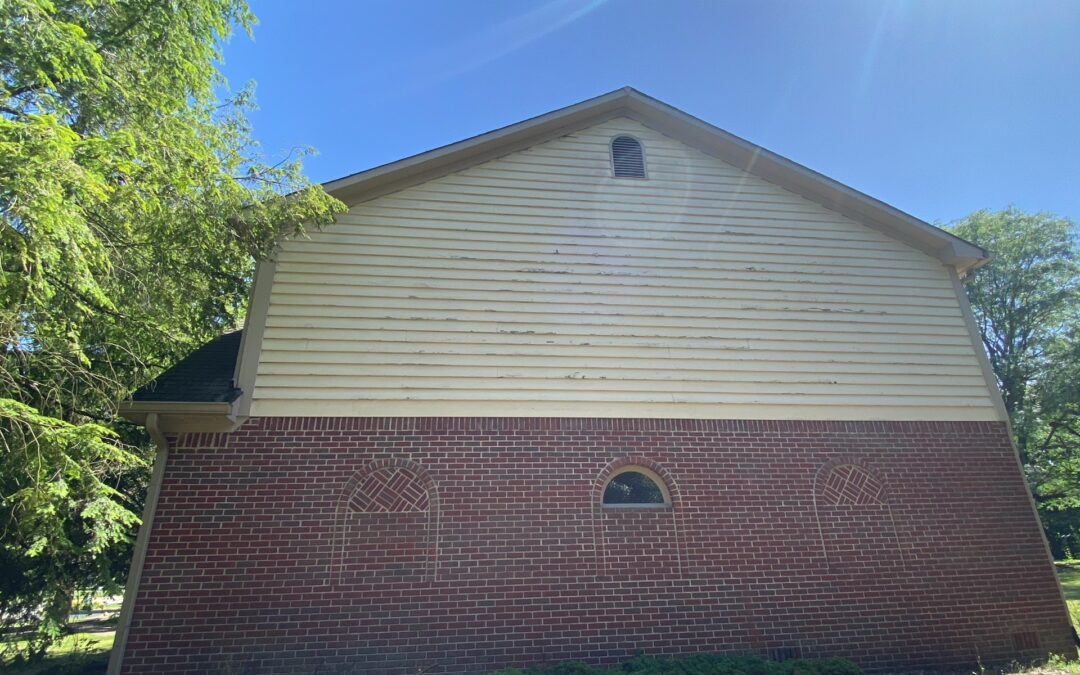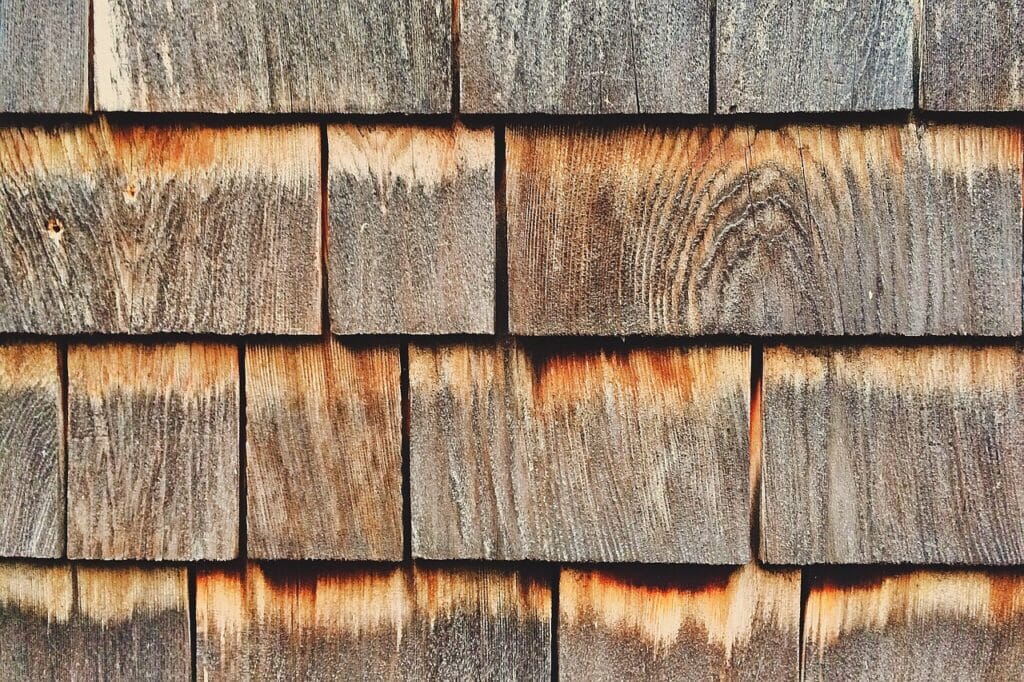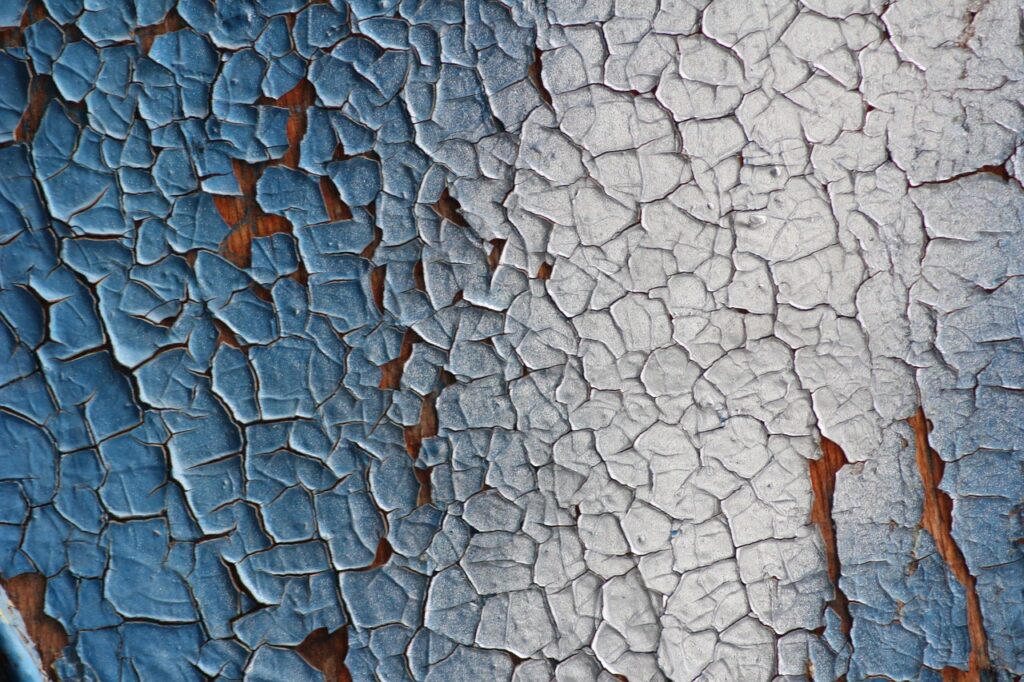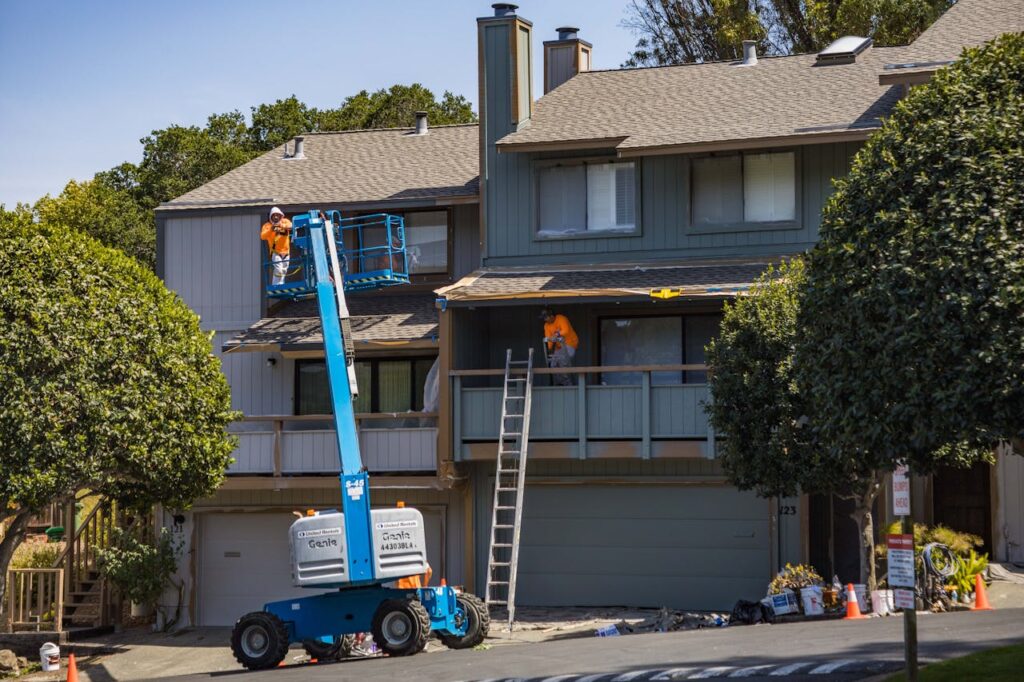Key Takeaways:
- Siding is your home’s primary bodyguard. Siding’s not just pretty to look at; it’s your home’s first line of protection against weather, energy loss, and uninvited guests (pests)!
- Don’t ignore siding damage. That can lead to bigger and messier problems down the line, especially structurally.
- Check for visible and hidden signs. Visible cues, like warping and mold, usually tell the tale; however, keep an eye out for less obvious signs, such as unusually high utility bills or peeling indoor paint.
- An inspection in time saves nine. Professional assessments are essential for detecting problems early. The sooner you address them, the less likely you’ll have to fork over a lot of money for repairs or replacement.
Close your eyes. You’re vegging out in your backyard on a typical spring day in the 317. The trees are budding and the grass is greening. You can’t help but feel a sense of contentment about your abode, your biggest investment. Slowly and surely, some nagging thoughts begin floating to the surface of your mind. When did that show up? How long has that paint been warping like that? Is that a trick of the light, or is that siding damage you see? Your idyllic moment quickly turns into a mental checklist of your home repair laundry list. Sound familiar? You’re hardly alone.
Many Indianapolis homeowners wonder about when to replace siding. It’s tempting to look at siding mostly as decor, but it’s so much more. Think of it as your home’s bodyguard against Indiana’s mercurial weather. Harsh winters and sweltering summer humidity can cause siding damage that, when unchecked, leads to larger issues. So this is the $64,000 question: how do you know when siding needs to be replaced? Let’s get into the most critical signs that you shouldn’t ignore.
Why Does Your Siding Matter: More Than Just Aesthetics
Your house’s siding is a faithful worker; it protects your asset day in and day out. Indianapolis weather can be relentless on your home. Then there’s also local critters looking for a place to call home. Siding protects your home from these unwanted elements. Its protective qualities are one thing; siding is part of your home’s dream team for energy efficiency. Well-maintained siding usually means superior insulation. Sayonara to dramatic indoor temperature fluctuations and out-of-scale utility bills.
Given time, even the toughest materials lose out to wear and tear. Recognizing early siding damage can spare you the migraine of a pricey replacement. Siding problems are rarely dramatic. The indicators can be very subtle, starting out small until they’re untenable. Knowing these signs (and handling them quickly) is key to knowing when to replace your siding.
Visible Signs of Siding Damage: What to Look For
Cracking, warping, and buckling are the most obvious siding damage signs. How these manifest does depend on the type of siding you have:
- Vinyl: This siding might warp due to extreme heat. It can also buckle if it has no room to expand or contract (incorrect installation)
- Wood: The push-pull of repeated freezing and thawing is a nemesis for wood siding. This vicious cycle causes siding damage through cracking, splitting, and deterioration from rot.
- Fiber cement: This material, like many other common construction materials, can crack due to hail, storm-blown debris, or underlying structure shifts. Its durability reputation notwithstanding.
While these siding problems might seem insignificant, they’re like a handwritten invitation for moisture. Trapped water is the genesis of more serious issues. Can you imagine mold growing inside your walls? What about rot in the sheathing and framing? What kind of havoc can these wreak on your home’s structure? Extensive visible siding damage is a no-brainer, but never underestimate the potential of the smallest of cracks.
The Silent Threat of Dry Rot and Fungi
A tell-tale sign of serious siding damage is persistent dry rot. This is a type of decay, usually to wood, caused by fungi (usually Serpula lacrymans). It loves damp, poorly ventilated environments. Despite its name, dry rot starts with moisture. And any place where water has penetrated your siding is perfect for the fungi’s survival. In most cases, it manifests as brittle, crumbling wood that is easily broken. Sometimes it looks like cube-shaped cracks. It may also appear as a reddish-brown dust. Even when you can’t see dry rot, the damage it creates to your siding is undeniable.
Has your siding been feeling soft or spongy? Is it crumbly when poked? These are sure signs of unchecked moisture penetration. It’s also the perfect breeding ground for this destructive fungus. Dry rot weakens your siding, breaking down its effectiveness in protecting your house. Unattended, it spreads to your wood framing, putting your home’s structural stability in peril. Dry rot leads to further siding damage. If you suspect this fungus’s presence, it’s a good indicator of when to replace siding. The sooner, the better!
Fading and Chalking: Beyond Cosmetic Concerns
Other visual cues that answer the question, “How do you know when siding needs to be replaced?” are fading and chalking. Sunlight exposure breaks down the pigments in your siding over the years. Inspect the siding on your home. Does it look like one or more sections is significantly duller compared to others? That could be a sign of siding damage. Excessive or patchy fading is your first clue. If it’s accompanied by a chalky residue when you rub it, your siding’s protective coating is breaking down.
This diminished protection means your house is more vulnerable to outdoor elements. Should the finish wear away completely, the underlying material is more likely to deteriorate. Its ability to defend against moisture is reduced, furthering damage to your siding. Fading and chalking are clear signs that it’s time for siding replacement.
Unexpected Energy Bills: A Hidden Sign of Siding Damage
Another clue that it’s time to replace siding may be your heating or cooling costs. High utility bills can indicate siding damage. Have you noticed your electricity or gas bills steadily climbing without an increase in usage? Your siding may be the culprit.
Cracks, gaps, and compromised insulation make it easier for conditioned air to escape your house. On the flip side, it’s now easier for unconditioned air to come inside. Your HVAC system is working much harder to keep your interiors comfy during a hot Hoosier summer or the chilly winter months. Your siding is like an insulating blanket. When it has holes, it does a terrible job of regulating your temperature.
Peeling Paint and Loose Wallpaper: More Red Flags
Peeling paint or loose wallpaper, especially on the other side of exterior walls, is also an indicator of siding damage. Infiltrated water gets past the compromised siding and penetrates the wall cavity. This impacts your interior finishes. Think blistering paint or your wallpaper detaching from the walls.
These aesthetic concerns can’t be fixed with a mere paint job. That excess moisture facilitates several issues, most notably:
- Mold growth behind walls
- Damage to drywall
- Rot in structural components
Mold can pose health risks to your household. Then there’s also the hefty costs of remodeling to repair severe structural damage. If you’re noticing these interior issues, especially after heavy rains, these could indicate it’s time to replace your siding.
Mold, Mildew, and Algae: Unwanted Guests
Speaking of mold, the presence of mold, mildew, or algae on the siding is how you know when your siding needs to be replaced. Sure, minor surface growth can be cleaned with a pressure wash. Persistent and widespread growth means your siding is retaining moisture. It could also mean there’s an underlying issue allowing moisture to accumulate. This is likely the case if you’re seeing growths on the siding itself, and not just surface dirt. These growths not only diminish your abode’s curb appeal, but they also degrade your siding material with time.
Pest Infestations: Your Home’s Vulnerable Points
Noticing more uninvited visitors in your home of the creepy-crawly variety? Pest infestations are another consequence of siding damage that is unaddressed. Gaps, cracks, and holes in your siding are bright, neon light-festooned, Vegas-style marquees to unwanted critters. Termites, carpenter ants, and powderpost beetles see your wood siding as a free-for-all smorgasbord, raising the stakes (and costs) of damage. Wasps and bees may build nests within holes accessed through siding gaps. Mice and rats can also squeeze through small openings. Your walls are an inviting shelter, and these rodents may chew through your house’s electrical wiring and insulation.
Besides structural damage, pests also contaminate your home. They lower your quality of living. Who wants roaches or ants living rent-free in their Hoosier home? They’re often difficult and costly to eradicate. Some people suffer from allergies spurred by the presence of bugs and rodents (and their droppings)! If you’re experiencing pest control problems that you didn’t have before, that could be a clear sign of when to replace siding.
Age and Lifespan: A Proactive Approach to Siding Replacement
Even if you don’t see cracks, holes, or other glaring problems, think about how old your siding is. All building materials will eventually need to be repaired or upgraded, including siding. Consider these siding life expectancies:
- Vinyl: 20 to 40 years
- Wood: 20 to 40 years; largely dependent on the type of wood and the presence of a good maintenance regimen
- Fiber Cement: Around 50 years, given proper installation and regular upkeep
Some Indianapolis residents have been in their homes for generations; some have inherited homes that are several decades old. Older siding is often prone to subtle forms of siding damage. One example is vinyl getting brittle as it ages. Flying debris or hail can be a menace to old vinyl siding. Think about your home’s age. When was the last time you installed or replaced siding? Are you waiting for severe siding damage to force your hand? Conducting regular inspections is the key to knowing when to replace your home’s siding.
The Professional Difference: Strenova Is Here to Help
If you’re asking, “How do I know when my siding needs to be replaced?”, the best person to answer is a professional home exterior specialist. Strenova Exteriors is your local Indianapolis-area expert for inspecting siding damage and making recommendations that fit your schedule and budget. We’ve got the knowledge, experience, and tools to assess your siding and develop a real plan. We’re not only your siding replacement pros, but we can also answer other questions you may have. Wondering what’s the best material for replacing your siding? Should you replace windows and siding at the same time?
Ready for the peace of mind of knowing that your home’s siding is doing its job? Contact us and get a free estimate today.




